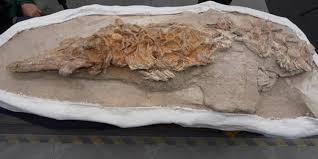
The Geological, Mining, and Metallurgical Institute (INGEMMET) has presented a remarkable fossil discovery as part of National Geology Day commemorations in Lima.
The specimen – an 8- to 10-million-year-old cetacean from the Late Miocene period – is believed to be an ancestor of the modern porpoise.
The video footage captures the unveiling of the dolphin-like Lomacetus sp. fossil, discovered in Peru’s Ocucaje Desert in the Ica province. The remains include a skull, vertebrae, ribs, and both humeri, forming one of the most complete porpoise skeletons ever found in South America.
Speaking during the presentation, Manuel Laime Molina of INGEMMET said the fossil offers valuable insights into Peru’s ancient marine ecosystem, once home to dolphins, whales, and porpoises.
The fossil, which has undergone natural erosion over millions of years, is expected to help researchers better understand the evolution and diversity of cetaceans, particularly in the South American region.
View the full video report below;
[Video Courtesy: Viory]
[This current affairs report item is provided as part of Broadcast Media Africa (BMA)’s mandate to keep Africa’s broadcast media audiences and stakeholders informed on international developments in local and global humanitarian and public service broadcasting.]

















